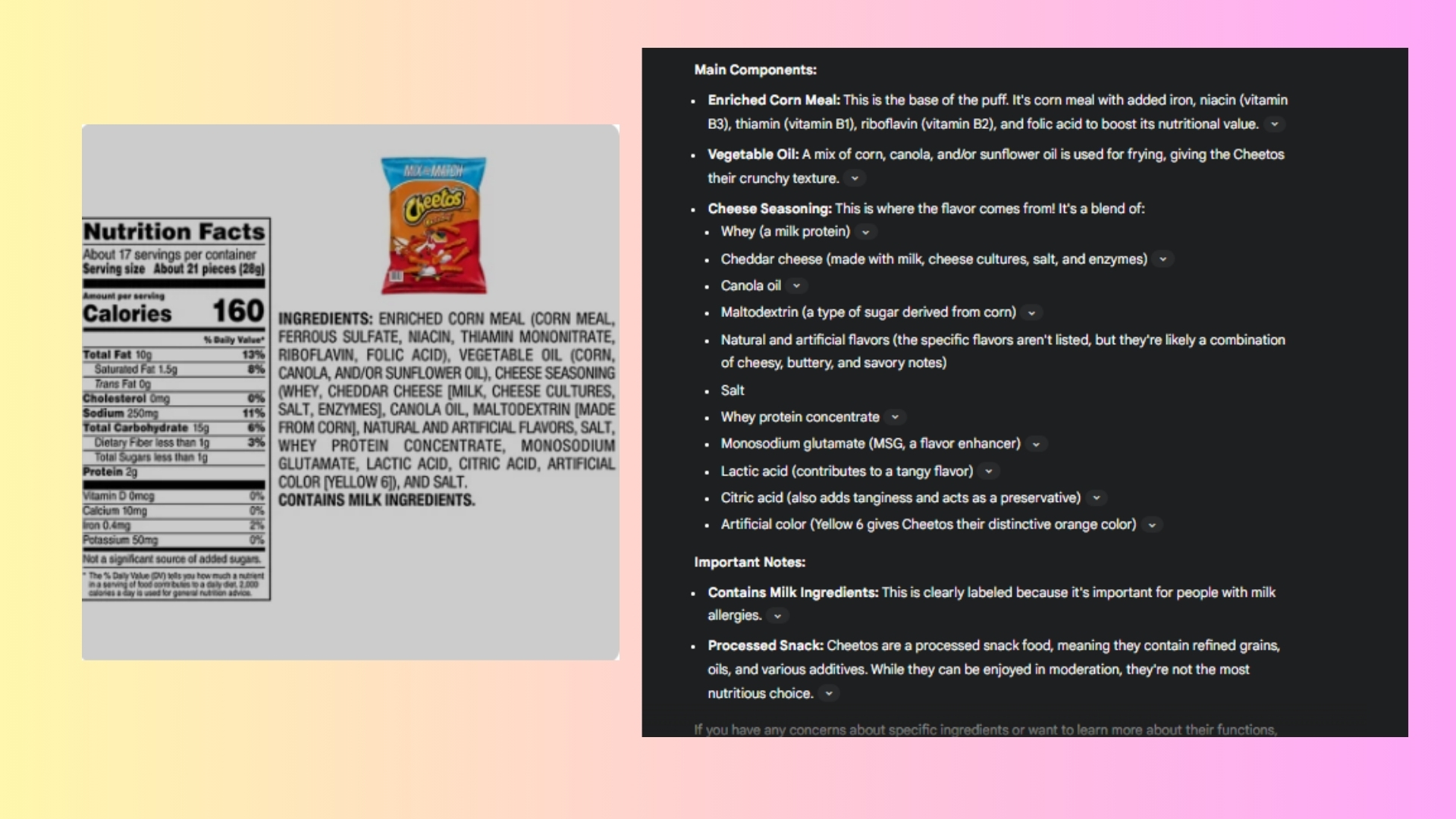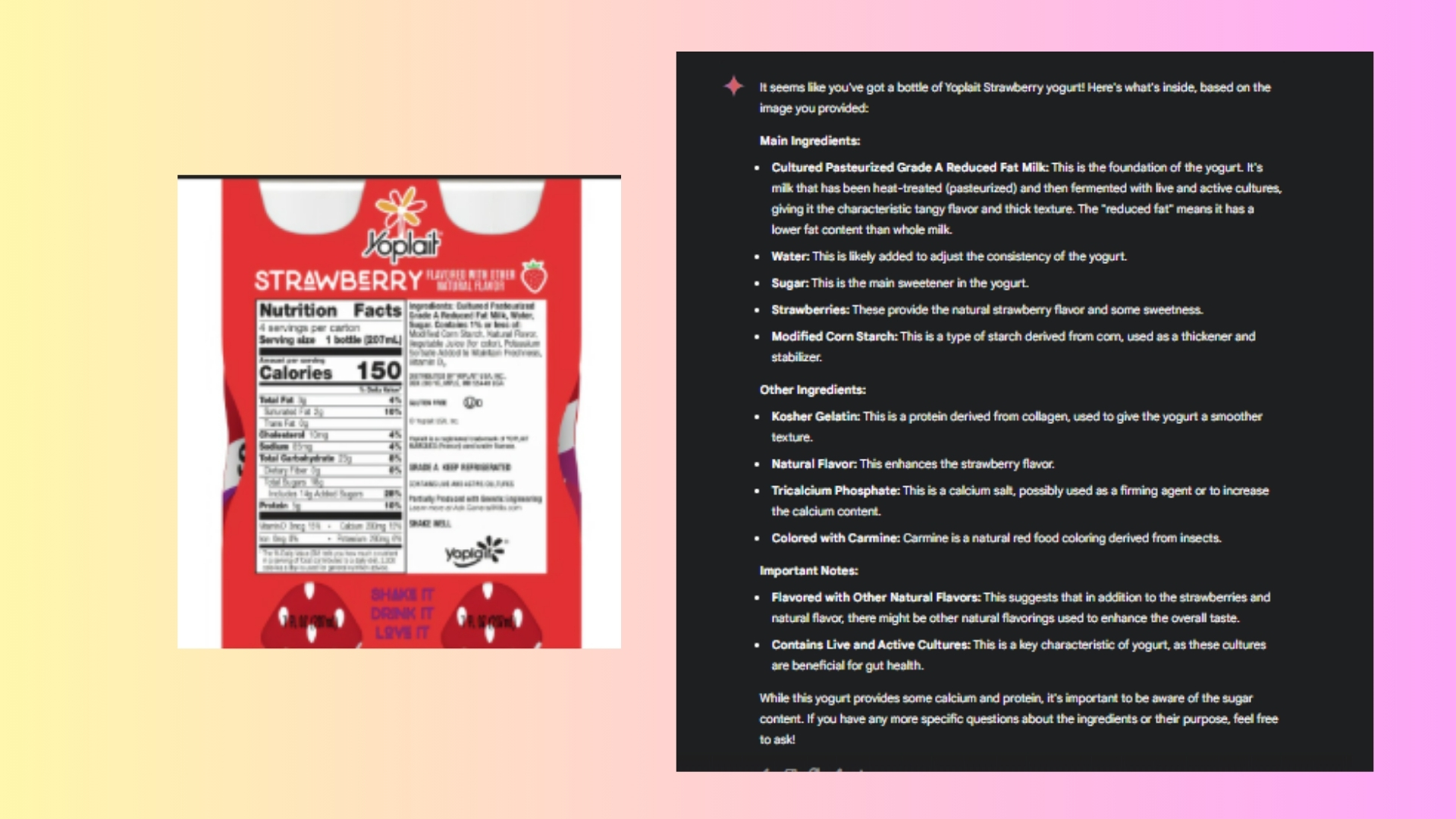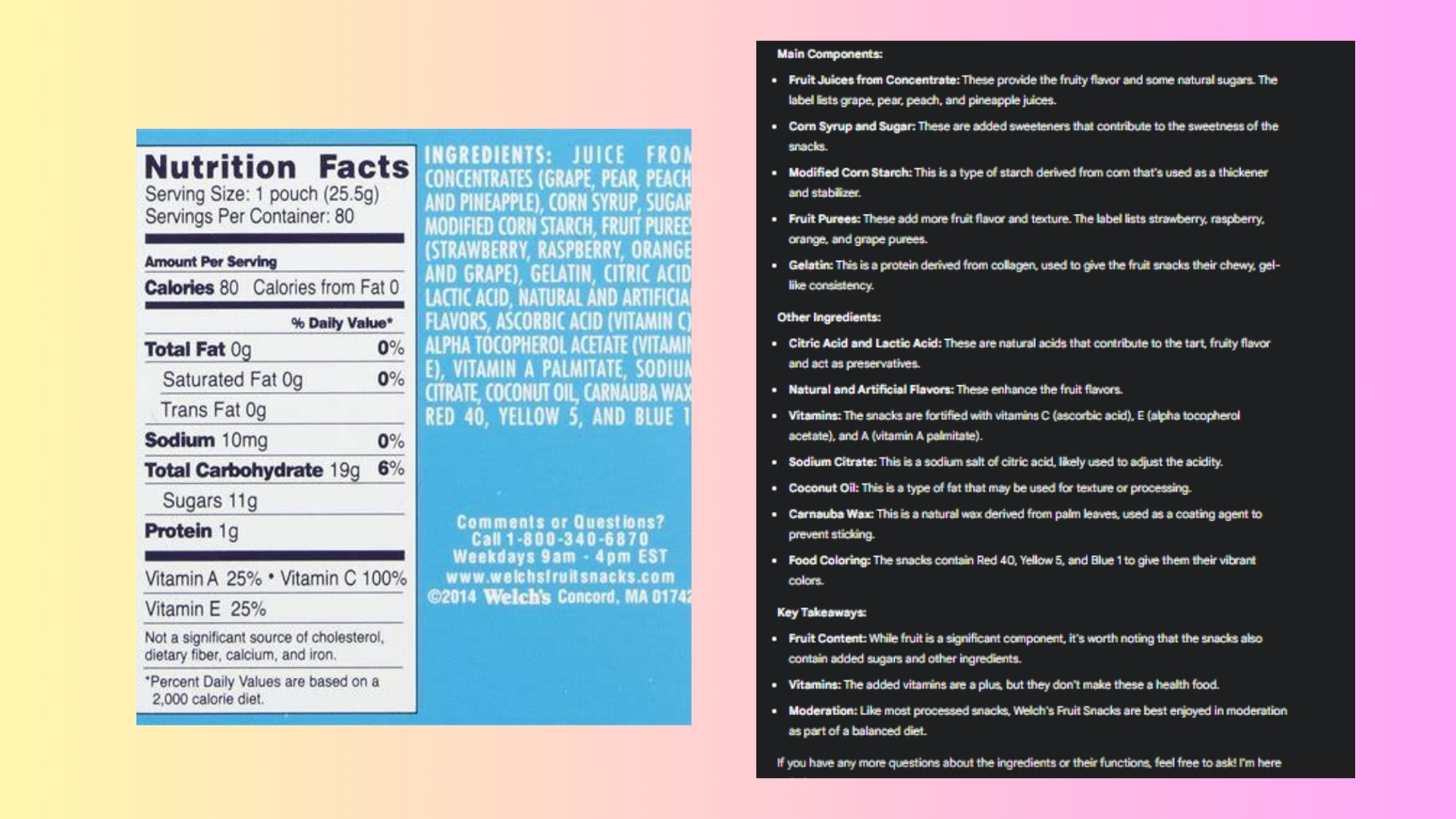I used Google Gemini to understand the ingredients in the food I feed my family — here's how it went
Cleaning up my habits thanks to this chatbot

As I think about New Year’s resolutions, I’m starting to reexamine the small, everyday decisions I make. For me, as a parent and a food-conscious individual, looking ahead to the new year has inspired me to dig deeper into the ingredients in the foods my family consumes regularly.
To assist me on this journey, I turned to Google Gemini, an AI reasoning model renowned for its ability to analyze and explain complex information. As I entered the food labels into Gemini, I began to realize that a lot of the food my kids eat is more about convenience than nutrition as I feed their never-ending hunger.
However, after reviewing the ingredients and discovering what they are — thanks to Gemini’s ability to offer detailed descriptions with ease — I’m shocked into a new perspective. I knew that the food wasn’t particularly healthy, but Gemini breaking down and line iteming everything was exactly what I needed.
The setup

I began with a simple goal: use Gemini to break down the ingredient lists of some of the most common snacks and foods in my household. From a bag of Cheetos to a box of Cheerios, I wanted to understand what exactly my family was consuming — not just the names of ingredients but their functions, nutritional value, and potential health impacts.
After a quick snapshot of the label, I uploaded each image into Gemini. From there, I was immediately given a breakdown of the ingredients and their purpose. Whether it was a preservative or a vitamin, it quickly provided a detailed analysis. It explained the role of enriched cornmeal as the base of a Cheeto, broke down the cheese seasoning into its core components, and highlighted flavor enhancers like MSG and citric acid. Gemini even noted the artificial coloring (Yellow 6) responsible for Cheetos’ iconic orange hue.
For other items like Welch’s Fruit Snacks, it shed light on how fruit concentrates, gelatin, and added sugars come together to create a chewy texture and sweetness. When I examined a Clif Bar, Gemini described its fig paste and oat blend as natural sources of energy while acknowledging the added cane sugar.
Eye-opening insights

One of the most valuable aspects of using Gemini was how it contextualized each ingredient.
For example, it didn’t just tell me that Cheerios contain tripotassium phosphate — it explained that the compound helps adjust acidity and improves texture. These ingredients are hard enough to pronounce, let alone know what they do.
Get instant access to breaking news, the hottest reviews, great deals and helpful tips.
Similarly, it pointed out the use of carmine (a food coloring derived from insects) in Yoplait Strawberry Yogurt, a detail I had never noticed before.
The AI also flagged high sugar content in many of the items, prompting me to rethink my reliance on certain snacks. It even suggested healthier alternatives for some of the processed foods, making the experience not only informative but also actionable.
Final thoughts

Using Google Gemini to analyze food labels was like having a nutritionist in my pocket. Of course, it could never take the place of an actual professional nutritionist, but it did help to interpret complex ingredient lists, explain their purpose, and highlight potential concerns was invaluable. As a parent, I feel more empowered to make informed decisions about the foods I bring into my home.
While AI tools like Gemini won’t replace professional dietary advice, they are a fantastic starting point for understanding the fine print on our favorite foods. If one of your New Year’s resolutions is to eat healthier or simply be more informed about your family’s diet, I highly recommend giving Google Gemini a try. It's free and you might be surprised by what you learn!
More from Tom's Guide
- OpenAI now integrates with Notes, Quip, and Notion — here’s what’s new
- Pika 2 AI video generator is completely free for the next 5 days — here’s how to try it
- Microsoft just made Github Copilot free — here’s why it's a big deal

Amanda Caswell is an award-winning journalist, bestselling YA author, and one of today’s leading voices in AI and technology. A celebrated contributor to various news outlets, her sharp insights and relatable storytelling have earned her a loyal readership. Amanda’s work has been recognized with prestigious honors, including outstanding contribution to media.
Known for her ability to bring clarity to even the most complex topics, Amanda seamlessly blends innovation and creativity, inspiring readers to embrace the power of AI and emerging technologies. As a certified prompt engineer, she continues to push the boundaries of how humans and AI can work together.
Beyond her journalism career, Amanda is a long-distance runner and mom of three. She lives in New Jersey.










